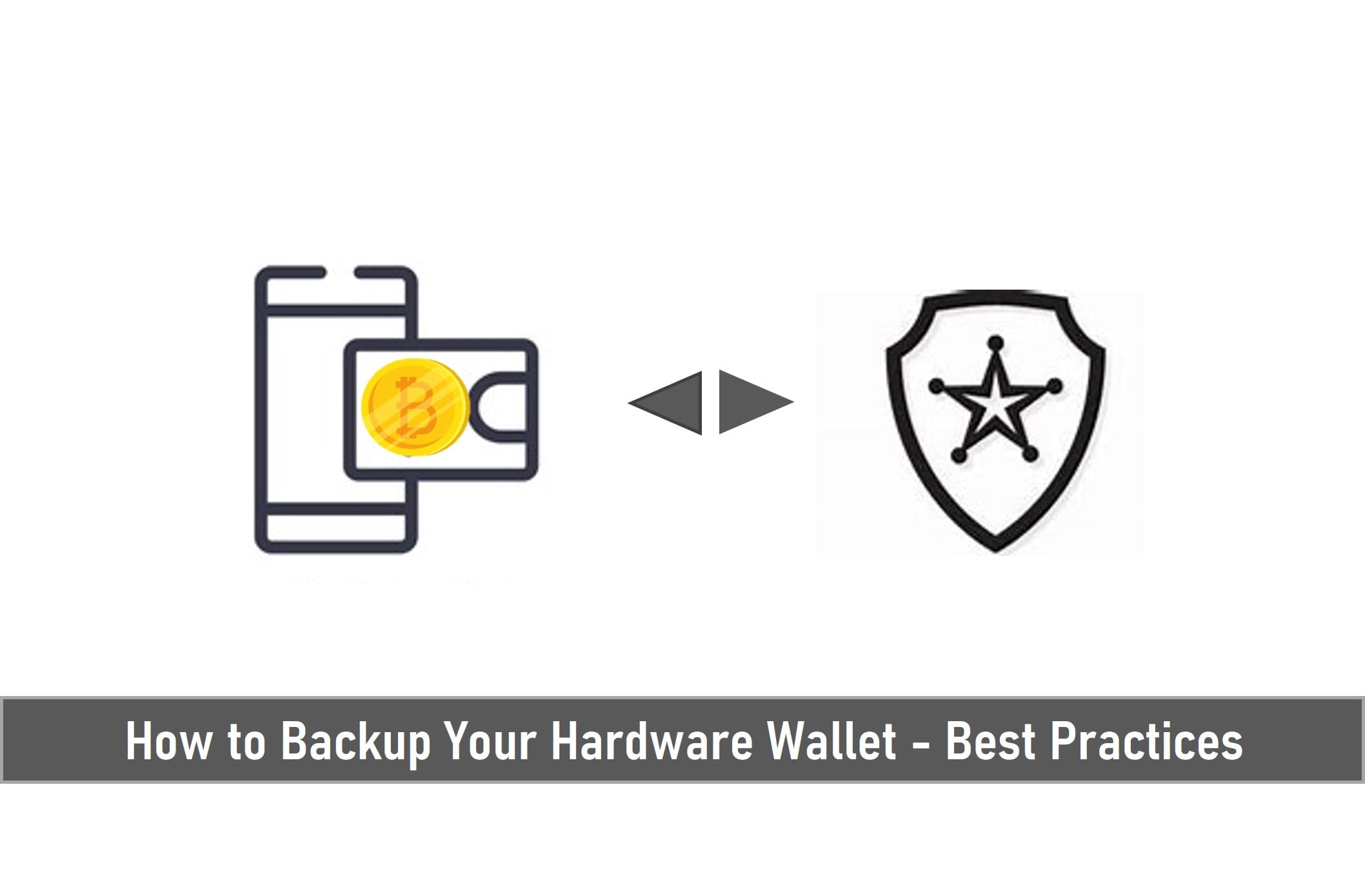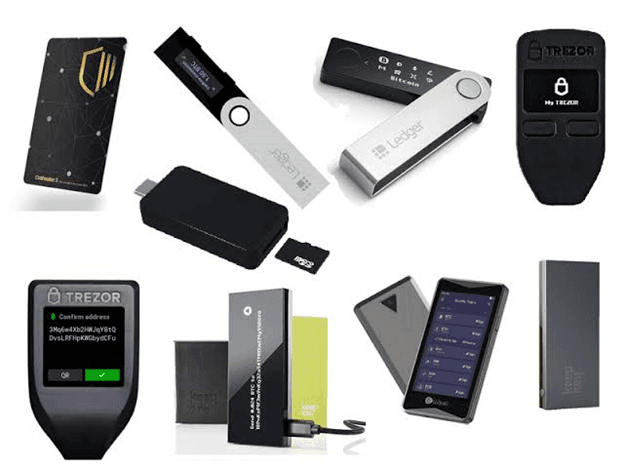
The hardware wallet or “cold storage” option is the most secure method of keeping your cryptocurrency and private keys. It is utilized in mix with the software wallet.
Your private keys are put away on the hardware wallet and the device fills in as a physical key you plug into your PC, while the software wallet fills in as a control center for your trading. For hardware wallets, you store your funds offline and move small amounts to the software wallet just when you need them.

Key Takeaways
• The easiest option to back up a hardware wallet is by using a mnemonic phrase. It is similar to a seed phrase for the software wallet, but longer, usually containing 24 words. A mnemonic phrase allows you to restore full access to your keys even if you lose the device.
• You can generate several shares and decide what percentage of words is needed to regenerate a wallet. While you can create more than 10, many recommend a 2-of-3 or 3-of-5 scheme, meaning you would need, in the first case, two of the three shares to regenerate your wallet.
Hardware wallets are the safest solution, but they can get stolen, damaged, or lost, therefore it also requires a backup.
The easiest option to backup the hardware wallet is by using a mnemonic phrase. It is similar to a seed phrase for the software wallet, but longer, usually containing 24 words. A mnemonic phrase allows you to restore full access to your keys even if you lose the device.
A more advanced option is to get a backup device, a second hardware wallet to store a copy of your keys. It will come in handy in case the first device gets stolen, as you will have quick access to your keys and will be able to move the assets before it’s too late.
It is recommended to put the second device in a secure place within your home rather than put it in a bank deposit box or a safe at work, so that’s it’s always close by in case of an emergency.
Storing your Backup for your Wallet
After you made a backup file and encrypted it, you have to decide where to store it.
The most important rule is to never store the file on the same device that hosts your software wallet. If you do that and hackers compromise the device, you can tell your private keys bye-bye.
You could store the backup on another PC, notebook, or even a mobile phone or tablet. Or you can use a USB drive for safekeeping. The safest way to store a backup file is to upload it to a USB drive and place the drive in a safety deposit box at a bank, or in a safe.
There is also an option to store the file in cloud storage, but we don’t recommend it even if you encrypt the file.
Steel Is Ideal
Since paper is fragile and easily mishandled, a better way to store your recovery phase is to stamp it into metal, making it immune to water and fire damage.
The easiest way to do this is to acquire a steel recovery phrase kit that can be purchased at popular online retailers. You may even want to purchase two or three kits, as this recovery phrase is a backup to your wallet, it’d be wise to have durable and multiple copies.
SEE ALSO: 3 Things to Lookout for When Buying a Hardware Wallet
Recovery Phrase: To Split, or Not to Split?
Some cryptocurrency holders will break their recovery phrase into two or three chunks stored in separate locations.
While this makes it harder for others to steal your recovery phrase, it also requires more responsibility on your part, and you would need to combine the disparate portions of your recovery phrase in the proper order to recover your wallet.
If you choose to split up your recovery phrase, you should consider keeping a few copies of each portion stored in secure and geographically distributed locations.
However, while you may want to make the recovery process difficult for any potential thief, you don’t want to make it so difficult that you can’t recover it yourself.
Frequently Asked Questions (FAQ)
1. Should you use Hardware Wallet?
While you are not required to store your Bitcoin on a hardware wallet, we highly recommend it. Even for small amounts, hardware wallets are a good investment because they protect your private keys and give you peace of mind that is not possible when using software wallets.
2. Is it Better to Keep Crypto in a Wallet?
As mentioned previously, it is not wise to keep large amounts of cryptocurrency in any hot wallet, especially an exchange account. Instead, it is suggested that you withdraw the majority of funds to your own personal “cold” wallet.
3. What happens if my Hardware Wallet Breaks?
If your hardware wallet is lost, stolen, or damaged, you can easily and securely recover all of your crypto assets, as long as you have access to the 12, 18, or 24-word recovery seed. In this case, you can just recover your crypto assets by importing the recovery seed into the replacement hardware wallet.
Final Thoughts
Backing up your hardware wallet is very important especially in cases of thefts and scams.
Your recovery phrase should also be kept safe so that you can regenerate your wallet. But while doing so, make sure you don’t keep it somewhere where it becomes difficult to get hold of or to gain access to.
Read More




